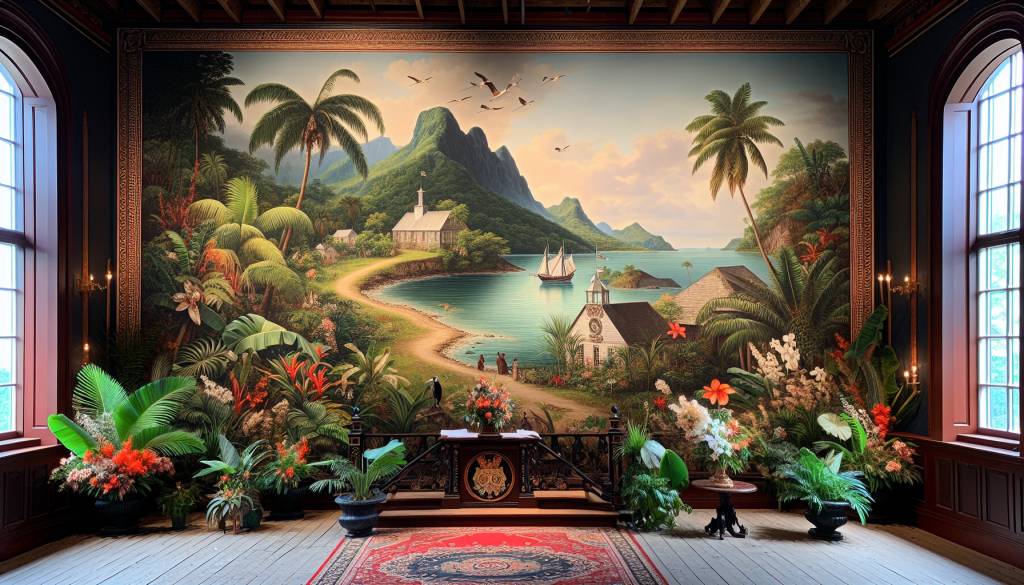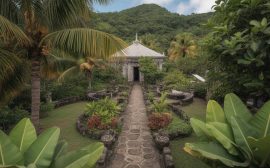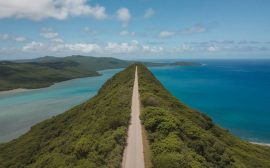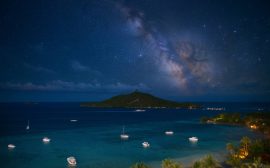« `html
The Enigmatic Beginnings of Empress Joséphine
Born Marie Joséphine Rose Tascher de La Pagerie, the woman who would become Empress Joséphine, the first wife of Napoleon Bonaparte, has a storied connection to the tropical island of Martinique. Nestled in the Lesser Antilles of the Caribbean, Martinique is an overseas region of France where Joséphine’s legacy is as lush and complex as the island’s verdant landscape. Tracing her roots reveals a captivating tale that melds the island’s colonial history with the narrative of one of history’s most intriguing female figures.
Joséphine’s Childhood Home: La Pagerie Estate
The La Pagerie Estate, located in the town of Trois-Îlets, is an essential site for those interested in the life of Empress Joséphine. Once a thriving sugar plantation, the estate’s ruins now offer visitors a glimpse into the early life of Joséphine. Amid the tropical climate and the scenic beauty of Martinique, the vestiges of the plantation are a haunting reminder of the island’s colonial past and the contrasting destinies of its people.
The Influence of Martinique on Joséphine’s Life
Though Joséphine left Martinique at a young age to marry in France, her Caribbean roots shaped her character and influenced her future role as Empress. Her upbringing in the tropics is said to have bestowed upon her a warmth and charm that captivated many in the French court, including Napoleon himself. Moreover, her experiences and the cultural milieu of Martinique would later inform her avid interest in botany and the magnificent gardens she cultivated, filled with exotic plants from her homeland.
Rediscovering Martinique’s Rich History
A delve into Martinique’s rich history uncovers the deep connection the island shared with Europe’s political landscape in the 18th and 19th centuries. As travelers explore the local museums, they encounter narratives of sugar and slavery, trade and conflict, and the profound impact of these forces on the lives of the island’s inhabitants, including the young Joséphine.
Martinique’s Blend of Culture and Nature
Beyond its historical significance, Martinique offers a vibrant mix of French and Caribbean culture, manifested in its cuisine, music, and art. The legacy of Joséphine is just one facet of the island’s multifaceted charm. From verdant rainforests to volcanic mountains and stunning beaches, Martinique’s diverse landscapes provide a stunning backdrop for learning about its history and indulging in its current-day allure.
Empress Joséphine’s Botanical Legacy
Perhaps one of the most enduring aspects of Joséphine’s legacy in Martinique and France is her passion for botany. The beautiful garden at her Château de Malmaison was stocked with plants sourced from around the world, including Martinique. Her interest not only reflected her personal passion but also had a lasting effect on botanical studies in France.
Visiting Sites Associated with Joséphine in Martinique
For those wishing to follow in Empress Joséphine’s footsteps, a visit to the La Pagerie Museum and the Joséphine Statue in La Savane Park in Fort-de-France is a must. Each location offers a unique perspective on her life and the times she lived in. Additionally, botanical gardens around the island continue to celebrate her influence on the cultivation and appreciation of tropical flora.
Joséphine’s Impact on Modern Martinique
Today, Joséphine’s presence in Martinique is palpable in ways that go beyond mere historical sites. The cultural fabric of the island is interwoven with stories and remembrances of the Empress. While her life was once a symbol of the island’s colonial ties to France, contemporary perspectives invite discussions on the complexities of her legacy in relation to Caribbean identity and history.
Exploring the Rich Tapestry of Martinique’s Heritage
The allure of the island for modern visitors lies not just in the sun, sea, and sand, but in the entwined narratives of figures like Empress Joséphine and the broader historical currents they represent. Unpacking these stories offers a deeper understanding of the island’s place in the world and the multiple layers of its identity.
Connecting with Joséphine’s Martinique Legacy Online and Offline
Those who are not able to visit Martinique in person can still connect with Joséphine’s legacy through various online resources and literature that delve into her life and the island’s history. For those who do make the journey, the experience of walking through the same landscapes that influenced the future Empress is an unparalleled way to connect with the past.
Preserving the Memory of Empress Joséphine in Martinique
As we continue to reflect on and preserve the memory of historical figures like Empress Joséphine, it becomes clear that their stories are more than mere footnotes in history books. They are living narratives that continue to influence and inform the identities of places like Martinique. For the discerning traveler and the curious reader alike, the legacy of Empress Joséphine offers a rich vein of cultural and historical significance worthy of exploration.
Conclusionary Thoughts on Joséphine’s Influence
Empress Joséphine’s legacy in Martinique is a testament to the complex interplay between individual lives and historical forces. Her story continues to captivate those who seek to understand the impact of colonialism, the power of personality in shaping history, and the enduring charm of the island she once called home. Whether through the quiet contemplation of ruins or the sensory delight of modern-day Martinique, the legacy of Empress Joséphine remains an integral part of the island’s tapestry, inviting us all to uncover the many layers of its past and present.
« `




